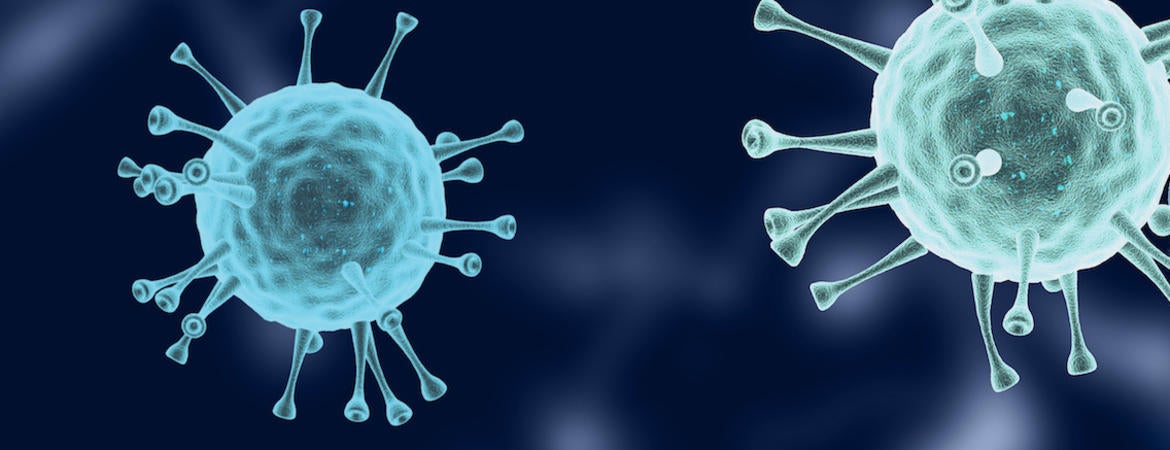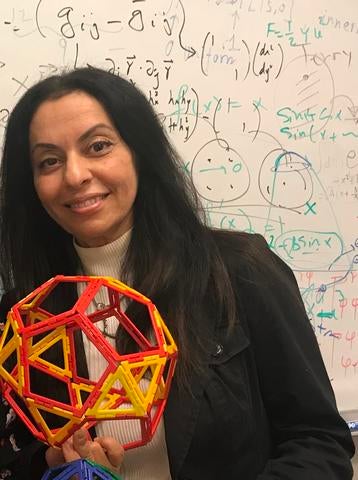
The University of California, Riverside, is the recipient of a 2021 UC Multicampus Research Programs and Initiatives, or MRPI, award allowing the campus to put together a UC Coronavirus Assembly Research Consortium.
“This consortium will aim to understand the physical principles underlying the formation of coronaviruses,” said Roya Zandi, a professor of physics and astronomy at UC Riverside and the principal investigator of the four-year project that received funding of more than $1.75 million. “We will also explore the impact of some drugs on the assembly process.”
Zandi is an expert on the physics and biophysics principles of virus formation. Her lab researches the statistical mechanics of virus assembly, the dynamics of the self-assembly process, and how various mechanisms can influence the stability of the viral structure.
Currently, the mechanisms involved in the replication and assembly pathways of SARS-CoV-2, the virus responsible for COVID-19, are unclear. While in vitro experiments and computer simulations of viruses have improved scientists’ understanding of the viruses’ formation and how to combat them, there have been no similar studies aimed at understanding coronavirus assembly.
“With the goal of determining ways to disrupt viral assembly, this consortium will investigate the roles of structural proteins in SARS-CoV-2 assembly using an integrated, multidisciplinary approach across multiple scales and environments,” Zandi said.
UCR will be joined by UC Merced and UC Davis in the consortium. The three campuses will work together to understand the factors contributing to the formation of SARS-COV-2.
At UCR, scientists will use atomic force microscopy, or AFM, a powerful technique that can image almost any type of surface, along with super-resolution and confocal microscopy to study the assembly of SARS-COV-2 within cell-like vesicles.
Zandi explained that UCR’s single-molecule investigations will be complemented with UC Merced studies that explore the bulk properties of cell membranes interacting with viral proteins.
UCR scientists, she added, will perform in vitro studies as well as in vivo microscopy studies of virus-like particle assembly within living cell lines and tissue culture. Virus-like particles are supramolecular protein assemblies that may have applications in synthetic biology and medicine.
To interpret the experimental data and provide predictions of potential therapeutic targets for suppressing viral self-assembly, the consortium will use all-atom molecular dynamics simulations developed at UC Davis and coarse-grained simulations and analytical theories developed at UCR and UC Merced to study the multimerization — the process of assembling aggregates of multiple molecules — of structural proteins, the interaction of membranes with proteins, and protein-protein interactions resulting in the formation of virus.
Co-principal investigators at UCR are Umar Mohideen, a distinguished professor of physics and astronomy; Marcus Kaul, an associate professor of biomedical sciences in the School of Medicine; and Thomas Kuhlman, an assistant professor of physics and astronomy. Mohideen will study the assembly pathway and interaction mechanisms between the viral proteins and RNA using AFM single-molecule investigations. Kaul and Kuhlman will design in vivo experiments and will also study the effects of altering the intracellular pH on the assembly of virus-like particles.
Zandi said the consortium’s quantitative studies and its focus on the close integration of theory and experiment will distinguish its work from other similar biological and biochemical studies.
“Our strength and uniqueness are in the use of multidisciplinary and synergistic basic science approaches to identify critical steps and components of viral assembly, which will open avenues to search for drugs that can potentially disrupt the critical assembly steps,” she said. “While we will spend the next four years understanding the formation of coronaviruses and, in particular, SARS-CoV-2, our ultimate goal is to develop a multicampus institute, based on the principles of physical virology, that will establish UC’s leadership in this emerging field.”




